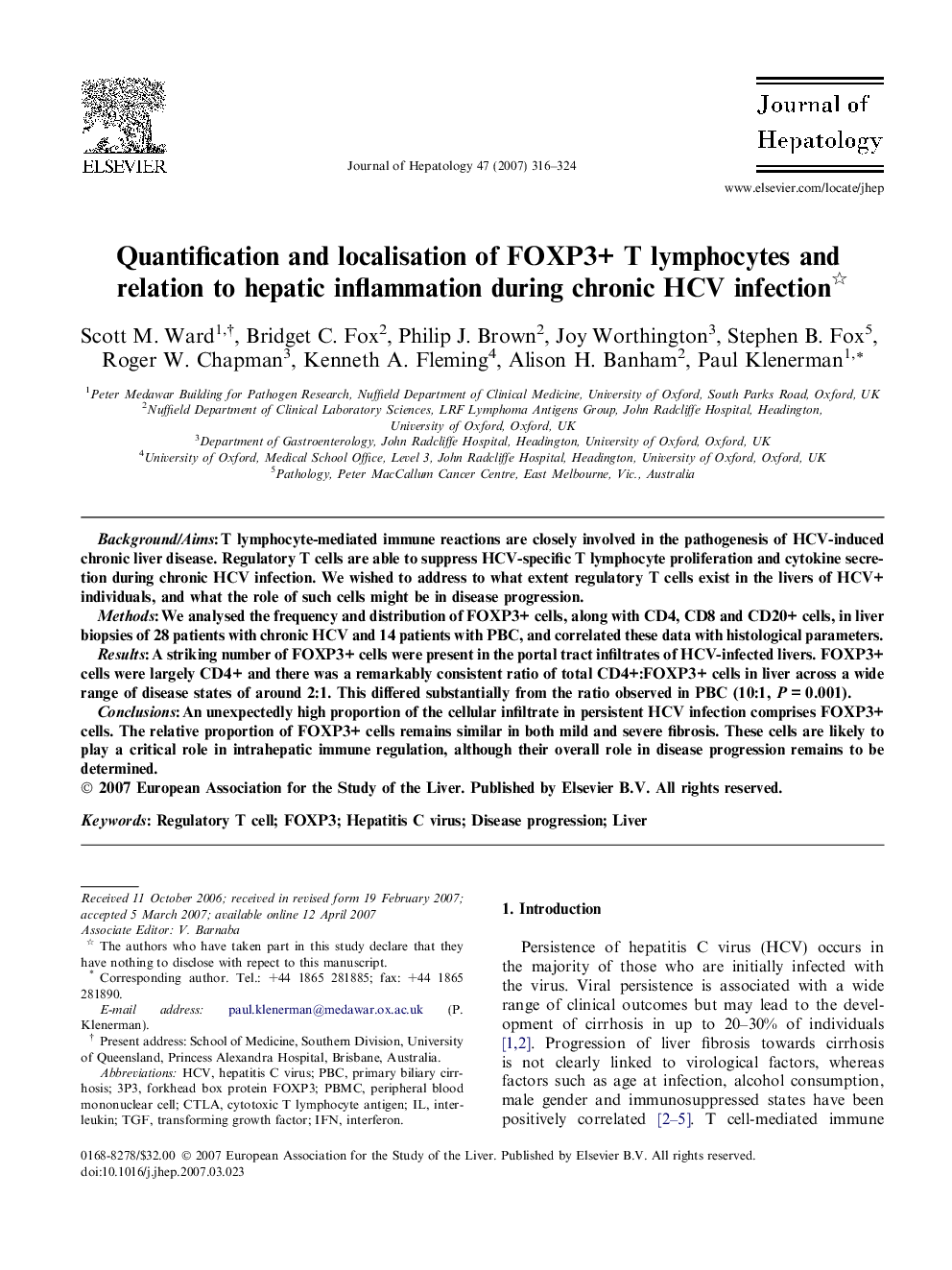| Article ID | Journal | Published Year | Pages | File Type |
|---|---|---|---|---|
| 3314999 | Journal of Hepatology | 2007 | 9 Pages |
Background/AimsT lymphocyte-mediated immune reactions are closely involved in the pathogenesis of HCV-induced chronic liver disease. Regulatory T cells are able to suppress HCV-specific T lymphocyte proliferation and cytokine secretion during chronic HCV infection. We wished to address to what extent regulatory T cells exist in the livers of HCV+ individuals, and what the role of such cells might be in disease progression.MethodsWe analysed the frequency and distribution of FOXP3+ cells, along with CD4, CD8 and CD20+ cells, in liver biopsies of 28 patients with chronic HCV and 14 patients with PBC, and correlated these data with histological parameters.ResultsA striking number of FOXP3+ cells were present in the portal tract infiltrates of HCV-infected livers. FOXP3+ cells were largely CD4+ and there was a remarkably consistent ratio of total CD4+:FOXP3+ cells in liver across a wide range of disease states of around 2:1. This differed substantially from the ratio observed in PBC (10:1, P = 0.001).ConclusionsAn unexpectedly high proportion of the cellular infiltrate in persistent HCV infection comprises FOXP3+ cells. The relative proportion of FOXP3+ cells remains similar in both mild and severe fibrosis. These cells are likely to play a critical role in intrahepatic immune regulation, although their overall role in disease progression remains to be determined.
